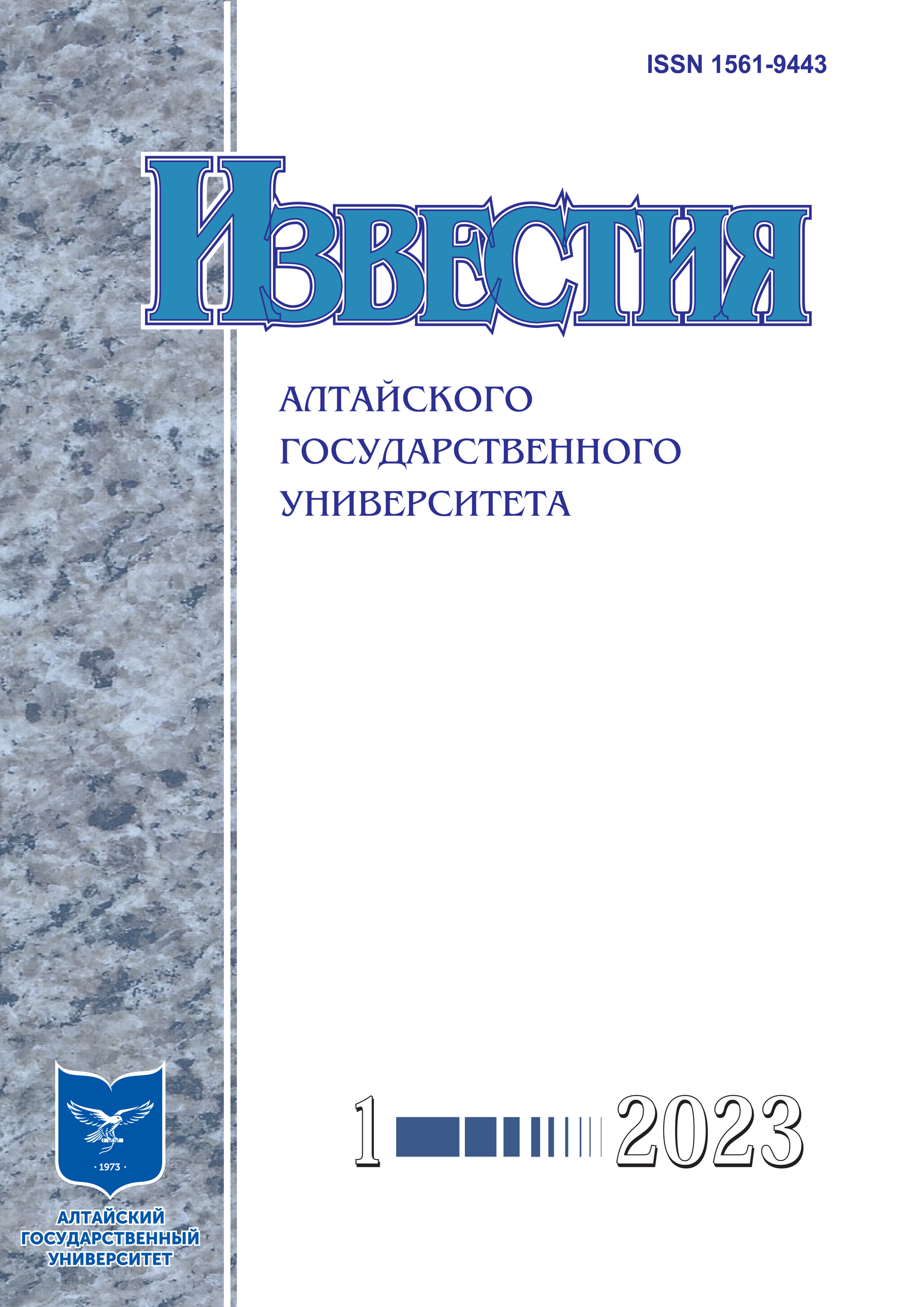Мodulus of Elasticity as a Function of a Process in Hereditary Mechanics
УДК 539.31
Abstract
The article considers the problem of determining the modulus of elasticity for polymer materials. The measurement process of these materials is considerably complex, mainly due to the fact that they comply with the laws of viscoelasticity. The Boltzmann — Volterra method is applied to the consideration of the behavior of a hereditarily elastic body, namely, to synthetic threads. We revealed that the elastic modulus for polymer materials is not a constant value and depends on the frequency of exposure during the deformation of the material. It is particularly noted that the modulus of elasticity is not a function of the state, but a function of the process. In this regard, it is necessary to consider various modes of deformation, namely static, acoustic, and dynamic modes. The Boltzmann heredity principle is utilized to provide a clear understanding of the concepts of static, dynamic, and acoustic modulus of elasticity. Furthermore, the applicability of the Boltzmann equation to dynamic mechanical processes is analyzed using two methods — the hierarchy of relaxation times and the method of linearization. In addition, the concept of the interaction core of static and dynamic parts of deformation is introduced. This concept helps to explain the relationship between the static and dynamic moduli of elasticity and their impact on material properties.
Downloads
Metrics
References
Пальмов В.А. Нелинейная механика деформируемых тел : учеб. пособие. СПб., 2014.
Ильюшин А.А., Победря Б.Е. Основы математической теории термовязкоупругости. М., 1970.
Бугаков И.И. Ползучесть полимерных материалов. М., 1973.
Екельчик В.С., Рябов В.М. Об использовании одного класса наследственных ядер в линейных уравнениях вязкоупругости // Мех. композиц. материалов. 1981. № 3.
Persoz B. Le Principe de Superposition de Boltzmann // ln col.: Cahier Groupe Franc. Etudees Rheol. 1957. Vol. 2.
Макаров А.Г. Прогнозирование деформационных процессов в текстильных материалах : монография. СПб., 2002.
Сталевич А.М. Уравнение нелинейной вязкоупругости высоокоориентированных полимеров // Проблемы прочности. 1981. № 12.
Переборова Н.В., Вагнер В.И. Прогнозирование деформационных процессов полимерных текстильных материалов с позиции математического моделирования и системного анализа их вязкоупругости // Дизайн. Материалы. Технология. 2021. № 2 (62).
Кузуб Л.И., Иржак В.И. Эффективное время релаксации как метод характеристики релаксационных спектров полимеров // Высокомолекулярные соединения. Серия А. 2004. Т. 46. № 2.
Romanova A.A., Rymkevich P.P., Gorshkov A.S., Stalevich A.M. Dynamic relaxation of synthetic fibres // Fibre Chemistry. 2005. T. 37. № 4.
Romanova A.A., Rymkevich P.P., Gorshkov A.S., Stalevich A.M., Ginzburg B.M. A new phenomenon-amplitude-modulated free oscillations (beatings) in loaded, highly oriented fibers from semicrystalline polymers // Journal of Macromolecular Science. Part B. Physics. 2007. T. 46 B. № 3.
Rymkevich P.P., Romanova A.A., Gorshkov A.S., Makarov A.G. Main constitutive equation of the viscoelastic behavior of unixially co-oriented polymers // Fibre Chemistry. 2004. T. 46. № 1.
Скульский О.И., Кузнецова Ю.Л. Реологические модели растворов полимеров// Математическое моделирование систем и процессов. 2006. № 14.
Рымкевич П.П., Головина В.В., Макаров А.Г., Романова А.А., Рымкевич О.В. Прогнозирование деформационно-релаксационных процессов в гибко и жесткоцепных полимерных текстильных материалах на основе диаграмм растяжения // Известия вузов. Технология легкой промышленности. 2018. Т. 38. № 1.
Головина В.В., Макаров А.Г., Романова А.А., Рымкевич О.В. Моделирование и прогнозирование ползучести полимерных текстильных материалов методом барьерной теории // Известия вузов. Технология легкой промышленности. 2018. Т. 41. № 3.
Рымкевич П.П., Макаров А.Г., Горшков А.С. Описание физических законов на основе нового метода усреднения физических величин // Вестник СПб. гос. ун-та технологии и дизайна. Серия 1: Естественные и технические науки. 2015. № 4.
Рымкевич П.П., Горшков А. С. Теория переноса. СПб., 2015.
Сталевич А.М. Свойства релаксационного ядра, используемого для расчета сложных режимов деформирования синтетических нитей // Известия вузов. ТТП. 1982. № 1.
Сталевич А.М. Расчетное прогнозирование нагруженных состояний синтетических нитей // Известия вузов Сер.: Технол. легк. пром. 1989. № 1.
Copyright (c) 2023 Павел Павлович Рымкевич , Ольга Васильевна Рымкевич

This work is licensed under a Creative Commons Attribution 4.0 International License.
Izvestiya of Altai State University is a golden publisher, as we allow self-archiving, but most importantly we are fully transparent about your rights.
Authors may present and discuss their findings ahead of publication: at biological or scientific conferences, on preprint servers, in public databases, and in blogs, wikis, tweets, and other informal communication channels.
Izvestiya of Altai State University allows authors to deposit manuscripts (currently under review or those for intended submission to Izvestiya of Altai State University) in non-commercial, pre-print servers such as ArXiv.
Authors who publish with this journal agree to the following terms:
- Authors retain copyright and grant the journal right of first publication with the work simultaneously licensed under a Creative Commons Attribution License (CC BY 4.0) that allows others to share the work with an acknowledgement of the work's authorship and initial publication in this journal.
- Authors are able to enter into separate, additional contractual arrangements for the non-exclusive distribution of the journal's published version of the work (e.g., post it to an institutional repository or publish it in a book), with an acknowledgement of its initial publication in this journal.
- Authors are permitted and encouraged to post their work online (e.g., in institutional repositories or on their website) prior to and during the submission process, as it can lead to productive exchanges, as well as earlier and greater citation of published work (See The Effect of Open Access).








